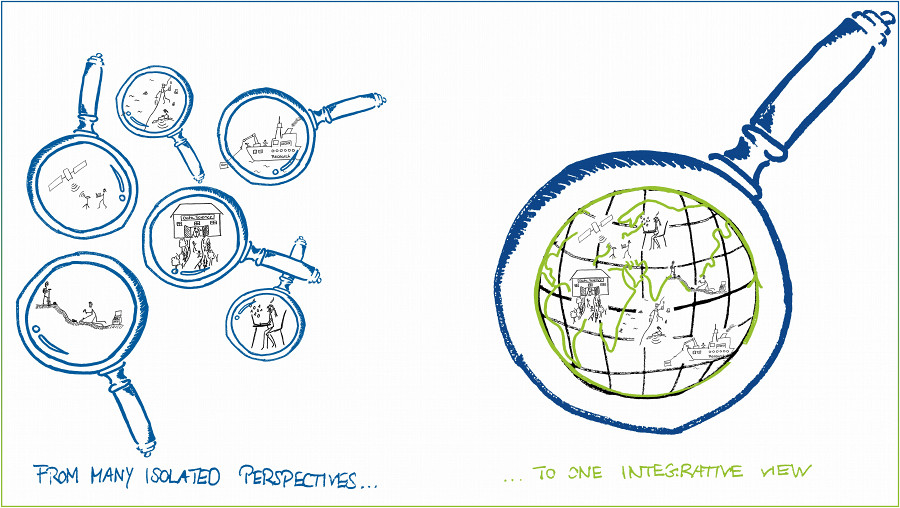
What We Aim for in Digital Earth

Earth Scientists seek Knowledge to Grand Challenges that are addressed to Humankind.
Those challenges are related to issues such as:
- Drivers and consequences of global change
- Sustainable use of resources
- Ecosystem dynamics and biodiversity
- Causes and impacts of natural hazards.
To meet these, Earth scientists need to understand the complex Earth system as well as how humans interact with it. This can only be achieved by looking at the Earth from a holistic point of view.
From Isolation to Integration
Creating a holistic view on the Earth system requires a scientific culture that is not restricted to thinking in disciplinary boundaries and working in isolated scientific silos. It rather requires working environments that enable and strengthen border crossing. This means to easily share, combine, explore and analyze data as well as scientific approaches and results across disciplinary boundaries. Jim Gray was one of the first who pointed out this idea in his 4th research paradigm, data intensive science (Hey et al. 2009).
Implementing Integrated Data-Driven Science
The objective of Digital Earth is to improve the working environment for integrated data-driven science that allows comprehensive exploration and analysis of existing data across disciplines. In Digital Earth, we test and demonstrate how integrated data-driven science has to be implemented in the future, what innovative results it can produce and how multidisciplinary collaboration can be successfully implemented.
References
Hey, T., Tansley, S., & Tolle, K. (Eds.). (2009). The fourth paradigm: Data-intensive scientific discovery. Redmond, WA: Microsoft Research.